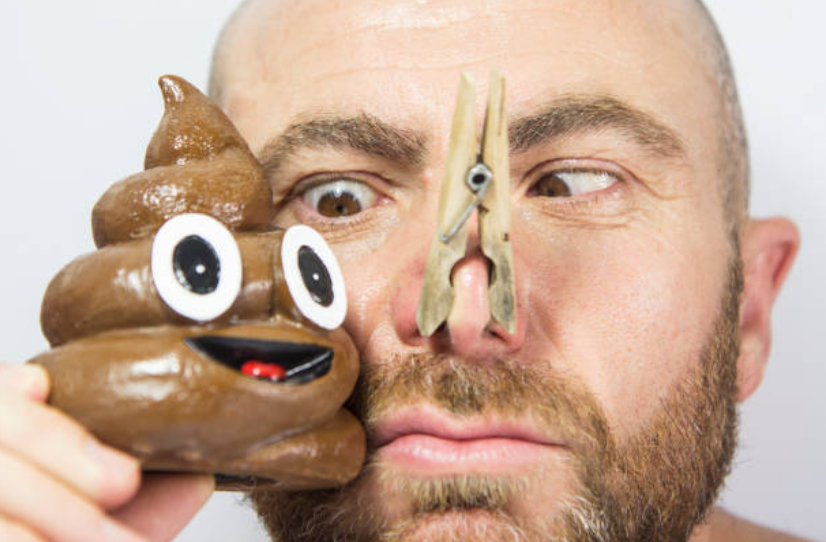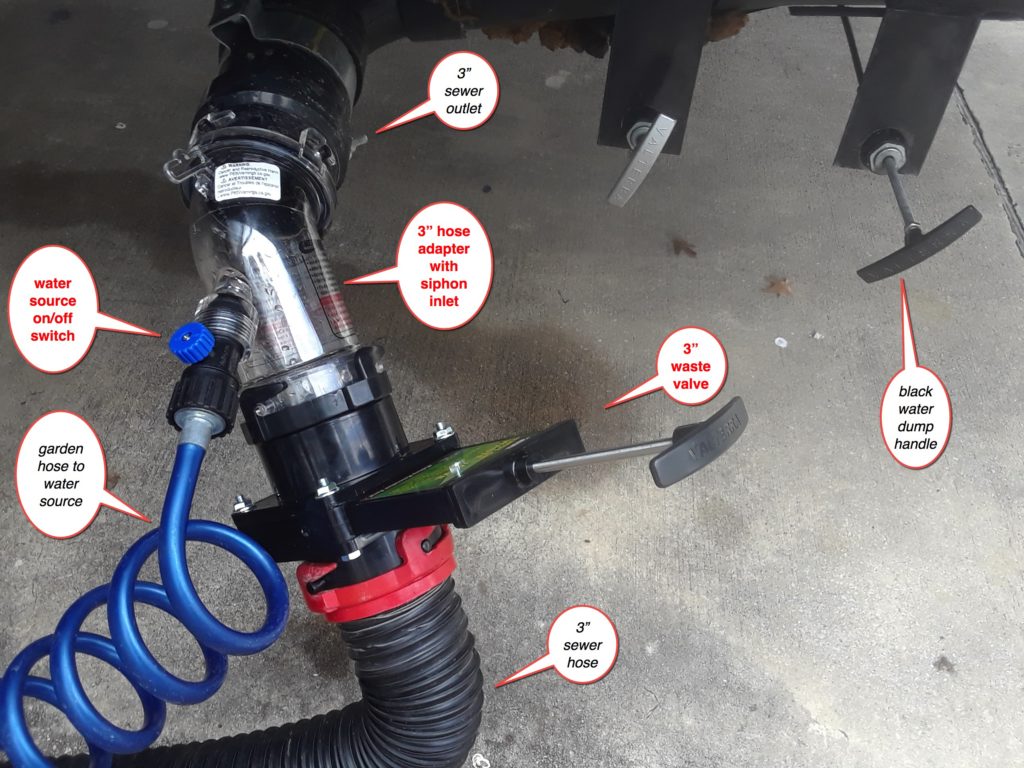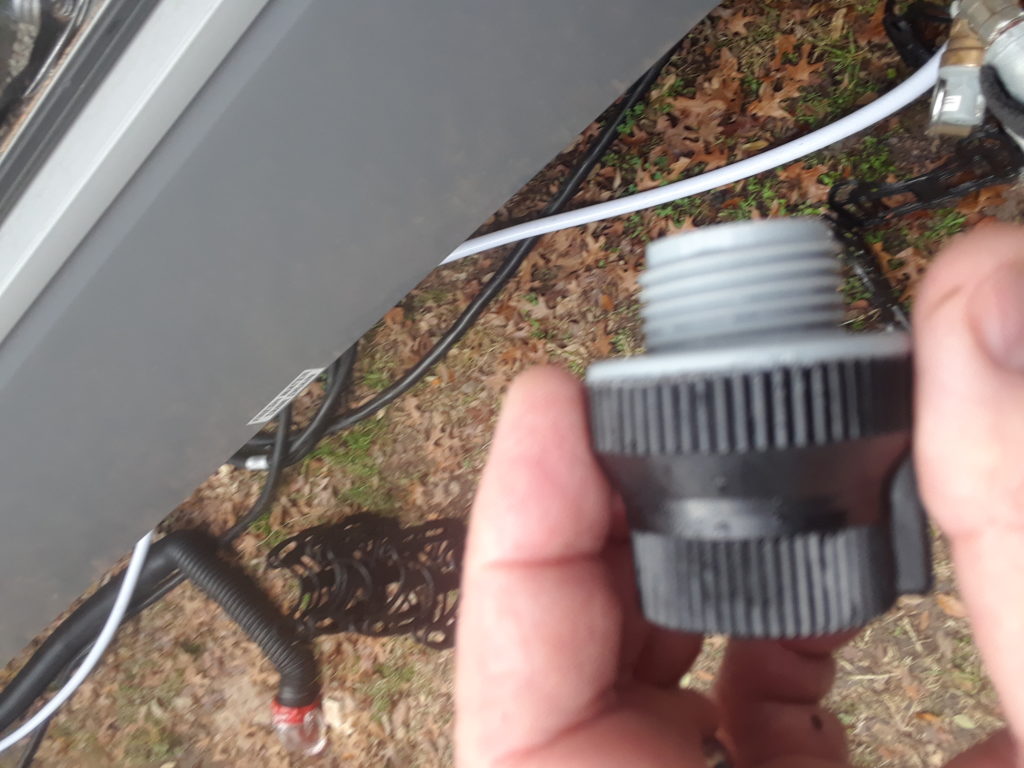As soon as anyone realizes that an RV carries a black water tank onboard, the second thought that springs immediately to mind is: What Do I Do If Something Goes Wrong? Following of course after the first thought, which is: Yuck. Yuck. And Double Yuck!

Yes. The black tank. Crouching within the underside of your RV like a festering nightmare.
Ever since we “unmoored” after selling our house last summer, we have been living full-time in the RV. Working, sleeping, cooking, doing laundry, washing dishes, and yes, doing both #1 and #2 in the RV. And while I have been flushing it out regularly and adding chemicals to deal with odor, we have been using toilet paper. Not the single-ply marine/RV stuff either, but the standard fluffy stuff. Very unfortunate, as it turns out.
So, predictably, three days before New Year’s, after six months on the road, we ended up with the dreaded TP Dam (a.k.a. toilet paper dam) in the black tank. Over the months preceding, we had peeked down and seen the mound of toilet paper below the waste pipe. and we had seen it disappear from view after flushing out the tank, but what we didn’t realize was that the mound was merely piling up at the outlet from the black tank, out of sight. Well, at least we didn’t want to think about it.
So, three days before New Year’s, while routinely filling and flushing the black tank, after two iterations of flushes, I refilled the black tank with fresh water a third time and pulled the handle, but nothing came out. It felt as if either the cabled release valve had broken, or something was plugging the tank. Guiltily, I suspected the latter, but I feared the former which sounded expensive and time-consuming to fix.
So, now we had a completely full black tank, ready for flushing, and we were leaving the following day for five straight days of driving from San Diego to San Antonio. The weather was lovely and mild in San Diego, but what we didn’t realize was that southern Arizona, New Mexico, and Texas were all experiencing a nasty cold snap, with temperatures down to single digits. Awesome.
We looked online for advice and read about the boiling-hot-water trick (as described HERE), but please remember the tank was full of cold water, so dropping a gallon of hot water into 30 gallons of cold poopy water only created a nasty fog in the bathroom. Yes: poopy fog. Overall, a really bad idea, and I am so very sorry I found it, believed it, and tried it.
If anything convinces you to be skeptical of what you find on the internet outside of April Fools Day, this should do it.
Also, we found articles advising the ice-cube trick (as described HERE), but again remember that the tank was completely full. After trying the boiling-hot-water trick, the black water tank was now absolutely full, I was less gullible, so this one was a non-starter.
There is no lack of articles advocating various chemicals, enzymes, and treatments, but after purchasing we found the directions on the label advised use only when water temperature was 70F or higher, so that the enzymes or chemicals would be able to do their work. However, our particular adventure happens in the middle of winter, and during a particularly bad cold snap at that. Even after trying the boiling-hot-water trick, I do not believe the water temperature came close enough to 70F to matter.
Obviously, with a full and therefore unusable black water tank, we traveled from San Diego to San Antonio using toilet facilities found along the way. Very inconvenient, especially when nature calls in the middle of the night.
Eventually, we got to San Antonio and I called the local RV repair folks to see who would show up. One guy responded quickly, grimaced a bit over the phone when I said “clogged black tank”, but gamely promised to come out onsite. He did warn that he had a $150 onsite fee, then $100/hour while onsite, so I was aware that this would cost $250 just for him to come onsite. He showed up in less than 90 minutes, which was awesome.
He also brought a simple contraption he had built himself that worked perfectly and immediately. First, he attached something similar to the Valterra F02-4100 45-degree HydroFlush clear hose adapter to my sewer outlet. Then, outbound from that, he attached something similar to the Valterra T58 waste valve, and then outbound from that we attached my regular 3″ sewer hose.
The HydroFlush adapter included an inlet valve with an on/off switch to be attached to a water hose from a water source. With the black valve open and the downstream valve closed, water from the source will pile up in the adapter all the way into the black tank, inexorably pushing against whatever is clogging the outlet from the black tank.
And so it worked. Within 30 seconds of turning on the water, I saw the wonderful sight of poop and toilet paper streaming through the clear pipe of the contraption, bound for the sewer. A half dozen repetitions of fill and drain, and then only clear water was coming out of the black tank.
I was utterly ecstatic, because I had already purchased a clear HydroFlush adapter during my initial panic when the clog had first occurred, but it didn’t do the job by itself because there was no way to stop the water from immediately flushing away down to the sewer. Essentially, without the downstream stop valve, the only way it could possibly work is by spraying water directly on the base of the toilet-paper dam, which wasn’t going to be possible because the dam was about 3-4 feet upstream, up the sewer pipe, behind two 90-degree turns. The repair guy’s genius innovation was adding that downstream waste valve to hold the water back, so that when closed, the water could build up and backfill upstream all the way up into the open black tank. At that point, the pressure of the water filling from below easily pushed everything aside, and then to flush we only had to pull the release on the downstream waste valve.
The beauty of this is that, as anyone who has seen what water can do, it is completely irresistible. I’ll bet that if the someone nailed planks of wood over the exit from the black tank, I could backfill water from below and push those wood planks aside. So, some soggy toilet paper had no chance at all, and I didn’t have to risk damaging anything by poking something up there.
So I gladly paid the RV repair guy the $250 plus a tip for showing up so quickly and effectively, and then I built my own contraption, as shown below…

The only additional parts that needed to be purchased were the two items indicated in bold red captions in the photo above: the HydroFlow adapter and the waste valve. The water source on/off switch is a part of the HydroFlush clear hose adapter, by the way.
Also, the HydroFlush adapter comes with a separate removable anti-siphon valve, to attach at the water source end of the garden hose. This valve prevents any contaminated backwash from making it upstream through the valve of the on/off switch, thus possibly fouling the source..

And so the dreaded TP Dam has met its match! Fear no clogged black water tank!
For about $50 in parts available online or in any decent RV accessory store, you too can use your RV toilet — without fear, without worry — as the universe intended. Enjoy!
Update, Thursday 24-January 2019: I am finding myself using this contraption all the time now, as a part of normal setup, because I like the idea of flushing out that black tank whenever I think it might need it. And so, because constant usage inevitably means that I’m bound to break something, I have ordered a complete second set of the contraption. Semper paratus…
> “so dropping a gallon of hot water into 30 gallons of cold poopy water only created a nasty fog in the bathroom”
I am dying. I have died.